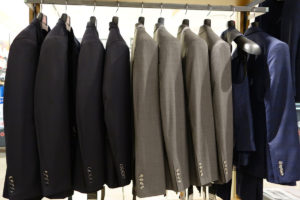 Police hear it all the time when issuing tickets, “Need to make your quota for the month?” Usually it is a false question with a false premise that has been perpetuated over time. While there may be some police departments that set quotas they are the exception rather than the rule. Loss Prevention departments go through similar problems. Some people think that Loss Prevention staffs are out to rack up numbers any way they can get them. Most L.P. professionals are simply trying to catch shoplifters who are stealing and they want to apprehend dishonest employees to stop theft, prevent shrinkage and it can serve as a notice to other employees that theft won’t be tolerated. For some L.P. personnel there is a perceived pressure to “get more shoplifters” and in other cases it is real. For the retailer that is not able to pay for a Loss Prevention Staff, their concern is simply to drive the bad guys somewhere else and get rid of a crooked employee before they cause too much damage. Sometimes this is done using electronic article surveillance equipment from a company like Checkpoint Systems. They don’t feel the same pressure to “apprehend” but there is a sense of urgency in minimizing theft opportunities (how to do that becomes another matter).
Police hear it all the time when issuing tickets, “Need to make your quota for the month?” Usually it is a false question with a false premise that has been perpetuated over time. While there may be some police departments that set quotas they are the exception rather than the rule. Loss Prevention departments go through similar problems. Some people think that Loss Prevention staffs are out to rack up numbers any way they can get them. Most L.P. professionals are simply trying to catch shoplifters who are stealing and they want to apprehend dishonest employees to stop theft, prevent shrinkage and it can serve as a notice to other employees that theft won’t be tolerated. For some L.P. personnel there is a perceived pressure to “get more shoplifters” and in other cases it is real. For the retailer that is not able to pay for a Loss Prevention Staff, their concern is simply to drive the bad guys somewhere else and get rid of a crooked employee before they cause too much damage. Sometimes this is done using electronic article surveillance equipment from a company like Checkpoint Systems. They don’t feel the same pressure to “apprehend” but there is a sense of urgency in minimizing theft opportunities (how to do that becomes another matter).
There are stores with a Loss Prevention hierarchy that sets “expectations” or “goals” for the apprehension of dishonest employees or shoplifters. The message that seems to get down to the store level is that there is always theft in a building, all the time. I have seen this lead to a requirement that stores have a minimum number of open internal investigations at all times. No pressure there, right? Wrong, the words may not be spoken but the message that is heard (correctly or incorrectly) is that cases will be successfully closed. And that implies that not doing so will impact an annual review. For most people, integrity will ensure they do not try to manipulate a case or make a shaky apprehension say for a single incident of grazing or snacking but do such cases exist? I suspected such activity was taking place at other stores but could not prove it.
The same type of pressure can be felt by Loss Prevention Officers. They get on a cold streak and can’t seem to make an apprehension and the L.P. Manager starts to get questioned about low shoplifter numbers. No one says a specific number have to be caught but “guidelines” are established that say on average, x number of shoplifters should be apprehended for every x number of hours an Officer works. The Associate then begins taking more risks, focusing attention on high theft areas that carry more risk for making stops like in cosmetics and costume jewelry. The theft is taking place there but following all of the apprehension steps for such small pieces of merchandise can be very difficult. A suspect puts down an item without the Officer seeing it and a bad stop is made. Yes, it can happen with almost any piece of merchandise but those types of merchandise are extremely risky to make stops on. But, harder still is that the same L.P. Associate while told that apprehensions should be higher is also told to avoid risky stops on items like cosmetics or jewelry unless it is stolen along with other merchandise. This sends a mixed message to the Associate.
None of this is to say that goals should not be set. Working without a goal is like running a race with no clear finish line. Goals can be set based on historical data or on the season of the year. Allowing an L.P. Associate to be part of the goal setting is also important. It is up to the Manager to make sure the goal is reasonable. A goal set too high can frustrate an Associate if they don’t achieve it. Setting reasonable goals also gives a boost to one’s self-esteem if they achieve it. A good Associate will also want to beat their last achievement but not at the risk of a bad stop.
For L.P. Managers, setting internal apprehension goals is fine, but the bigger picture should be on achieving improved shortage results. Identifying and focusing on the core issues for the store, whether they are operational or theft related. An L.P. Manager engaged with the store team will be able to educate and train while picking up on suspicious employees who may need to be investigated. Don’t assume that low shortage results means no theft, it may mean L.P. knows where and when to focus its’ time and energy.


 A French Historian is accused of stealing American war heroes’ dog tags to sell on eBay.
A French Historian is accused of stealing American war heroes’ dog tags to sell on eBay.  When I was a Loss Prevention Manager we would catch a shoplifter or a dishonest employee and recover merchandise. Depending on the type of case we would sometimes hold the evidence for a few days until the court hearing other times it could be much longer. If a shoplifter refused to plead guilty or requested a jury trial cases could be held up for months if not longer. I had several cases that went on for more than a year. Felony shoplifting cases and juvenile cases in our jurisdiction often meant lengthy wait periods depending on caseloads in the court. I also recall at least one shoplifting case in which the lawyer for the defendant requested extensions three separate times hoping that I would not appear for the hearing and the case would be dropped. No dice, I showed up for each hearing and finally the lawyer entered a guilty plea. The problem with the lengthy cases was that we would have to hold the evidence until the cases were settled. In some situations the police department held the recovered merchandise, such as when they stopped the suspect after the suspect fled the store. When merchandise has to be held for long periods it is possible for it to sit in evidence and be forgotten about. For stores that are too small to have security or Loss Prevention Departments management may be storing that evidence and no one is thinking about following up on cases with their police department or court.
When I was a Loss Prevention Manager we would catch a shoplifter or a dishonest employee and recover merchandise. Depending on the type of case we would sometimes hold the evidence for a few days until the court hearing other times it could be much longer. If a shoplifter refused to plead guilty or requested a jury trial cases could be held up for months if not longer. I had several cases that went on for more than a year. Felony shoplifting cases and juvenile cases in our jurisdiction often meant lengthy wait periods depending on caseloads in the court. I also recall at least one shoplifting case in which the lawyer for the defendant requested extensions three separate times hoping that I would not appear for the hearing and the case would be dropped. No dice, I showed up for each hearing and finally the lawyer entered a guilty plea. The problem with the lengthy cases was that we would have to hold the evidence until the cases were settled. In some situations the police department held the recovered merchandise, such as when they stopped the suspect after the suspect fled the store. When merchandise has to be held for long periods it is possible for it to sit in evidence and be forgotten about. For stores that are too small to have security or Loss Prevention Departments management may be storing that evidence and no one is thinking about following up on cases with their police department or court.




 ” is well aware of how she is obtaining the merchandise and are even encouraging the actions. These are the types of people that hurt big box retailers and that can put small shops out of business. These are the shoplifters we need to focus on and the ones that the criminal justice system need to come down hard on. The only thing that will stop Jane from stealing is being behind bars. This is her full time job.
” is well aware of how she is obtaining the merchandise and are even encouraging the actions. These are the types of people that hurt big box retailers and that can put small shops out of business. These are the shoplifters we need to focus on and the ones that the criminal justice system need to come down hard on. The only thing that will stop Jane from stealing is being behind bars. This is her full time job.  There’s been some news swirling around the LP world for a few weeks now about California and some new laws that the state has passed. Basically, the state raised the threshold for a felony theft to $950. The article hinted that shoplifting has increased in the major retail stores and calls for shoplifting cases have increased by 25% to the LAPD. The article blamed the new legislation for this. Here’s a link to that article if you’d like to read it. (
There’s been some news swirling around the LP world for a few weeks now about California and some new laws that the state has passed. Basically, the state raised the threshold for a felony theft to $950. The article hinted that shoplifting has increased in the major retail stores and calls for shoplifting cases have increased by 25% to the LAPD. The article blamed the new legislation for this. Here’s a link to that article if you’d like to read it. (